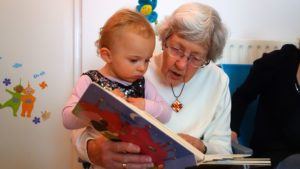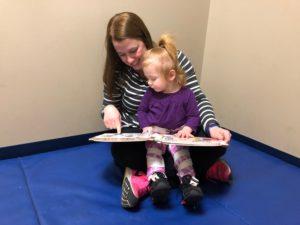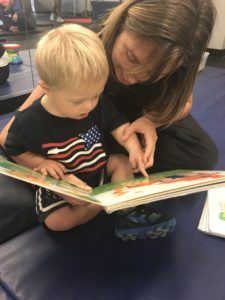How to Teach Story-Telling To Your Child
Story telling has been a part of our history since the ancient days. Story telling can be seen on cave art, Egyptian hieroglyphics, and in ancient texts. It was a way for us to retell our past accomplishments, defeats, and history to younger generations who had not experienced them. Since oral stories could be manipulated and changed based upon the story teller, written text began to evolve and preserved the stories from ancient times. Today we use stories to provide education, history, and entertainment through television, books, and our imagination. 
While story telling might seem easy for some, for children with speech and language difficulties it can be a challenging task. Children with speech and language difficulties may have a harder time understanding the parts of a story, sequencing the events, and using appropriate language. They may have a hard time understanding abstract concepts such as a made-up land with dragons and magic powers. Children may even have difficulty in retelling personal events that have actually happened to that child! These challenges can have serious implications in social skills, academics, and confidence.
How can we help children become good storytellers? One of the most important factors would be to exposure to good storytelling. These types of stories would include children’s book, retelling past events that the child was a part of, and making up stories that contain appropriate story elements. Boys and girls need to be exposed to good story telling in order to begin becoming storytellers.
Secondly, allow young readers to choose the story that they want to hear. Children are more likely to maintain attention to stories that they enjoy. When one maintains attentions, they learn. Stories that are boring will not teach how to become a storyteller, because the child will not be listening to the story or understanding how a story is made.
To help increase understanding of stories, make sure you talk about the parts of a story such as who is in the story (characters), where do they live and what does it look like (setting), what is the story about (plot), what is the problem (conflict), and how the characters fix the problem.
 Another element to storytelling to consider is expression. The expression of the way a story is told and the expressions of the characters are a vital part of learning. As humans, we feel emotions, so why wouldn’t the character in our stories feel emotions too? So be expressive when storytelling! When reading a story, ask your child how a character might feel and why; help them if they need it by providing options and explanations.
Another element to storytelling to consider is expression. The expression of the way a story is told and the expressions of the characters are a vital part of learning. As humans, we feel emotions, so why wouldn’t the character in our stories feel emotions too? So be expressive when storytelling! When reading a story, ask your child how a character might feel and why; help them if they need it by providing options and explanations.
Break the story down into first, then, and last parts. For children that have difficulties sequencing events, breaking a story into three basic parts may be helpful. This should be done with a story that is familiar. Once you read the story help the child break it up into the three most important parts. Once they have mastered that, then help them sequence longer events of stories. Use pictures to help your child describe what is going on.
Wordless picture books are a great resource for young readers who have not developed literacy skills. Wordless picture books are a way for children to tell stories while providing them with a visual support. This also helps tap into their imagination and use vocabulary. Some wordless picture books for young children include: Goodnight Gorilla, Hug, Pancakes for Breakfast, and Have You Seen My Duckling?. Additional wordless picture books include: The Lion & the Mouse, Good Dog Carl, and The Snowman.
If your child is still having difficulties with stories, understanding story elements, and/or experiencing difficulty in retelling a story, contact a speech therapist at ABC Pediatric Therapy Netwo rk and request a speech and language evaluation to determine the specific areas your child is having difficulties with. Visit our website at https://www.abcpediatrictherapy.com to learn more on how to challenge your child.
rk and request a speech and language evaluation to determine the specific areas your child is having difficulties with. Visit our website at https://www.abcpediatrictherapy.com to learn more on how to challenge your child.
 Skip to content
Skip to content